Peanuts In Cambodian Food - All You Need To Know!
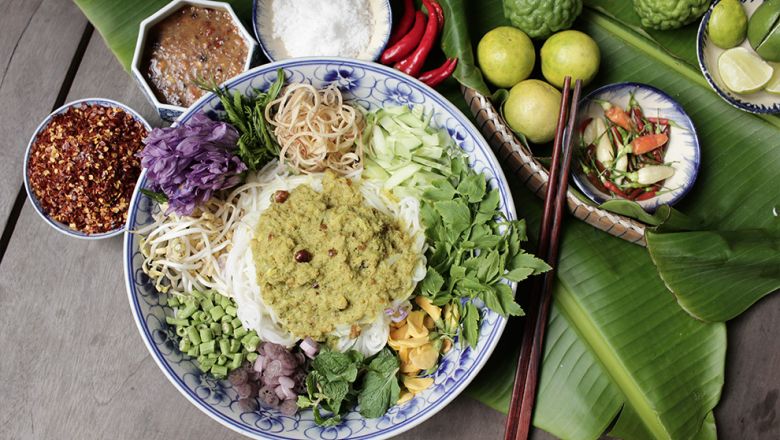
Peanuts are only seen in a few Cambodian meals, and they’re generally in sauces or salads, so they’re easy to spot and avoid. In Cambodia, peanut oil is not commonly utilized.
Peanut oil and various nuts are frequently too pricey for street food sellers in many parts of the nation.
However, there is a possibility of cross-contamination and nuts in meals, no matter where you go. Always keep an EpiPen with you, and be wary of the food you eat when traveling.
Let’s further explore Cambodia’s cuisine culture and discover more about it.
Are peanuts used in Khmer cuisine?
Peanuts are seldom used in Khmer cuisine. However, any Khmer meal using kroeung (a lemongrass-based culinary paste), such as Char Kruger, is more likely to contain peanuts.
Any dipping sauces or salads should be avoided at all costs. These are the Khmer foods that are most likely to include nuts.
However, not all Krueng is created using peanuts.
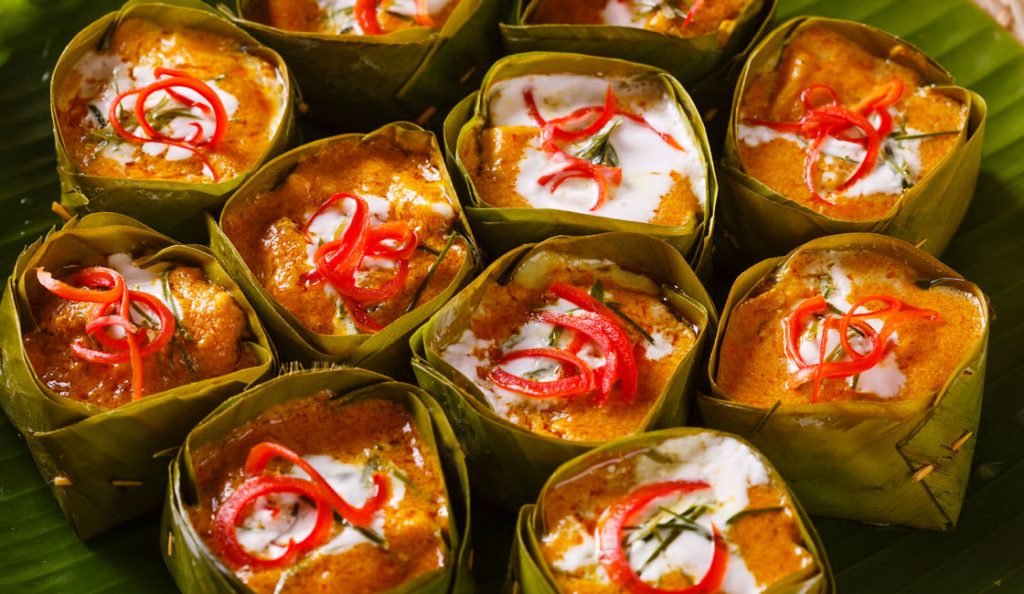
There will be more cuisine alternatives without peanuts in western restaurants. However, these choices will be more costly, and cross-contamination is still a risk.
Cambodians in some areas are not as highly educated as those in other regions of Southeast Asia.
This might mean that restaurant patrons are less aware of allergies, EpiPens, and analeptic shock and that some may not even be able to read.
I bring up reading abilities since it’s customary for allergy sufferers to travel with information cards on their person.
These cards usually state that the person is allergic to nuts or peanuts and that they may die if they come into touch with them. The writing is generally in the language of the destination and includes illustrations.
This works in almost every country on the planet. However, things are a little different in Cambodia. It’s still a good plan to have these cards with you, but don’t expect everyone to understand them.
There will be a few people who will understand and others who will merely nod and say yes to please you. People who answer yes are attempting to avoid offending you, even though they may not comprehend the card.
If you’re not paying attention, they may unintentionally serve you your last dish if you’re not attentive.
Many travel books will tell you that peanuts are seldom found in the main dish and are almost always found in the sauce.
Do all Cambodians follow the Khmer diet?
The majority of Cambodians eat a Khmer diet. On the other hand, Cambodians residing in other parts of the world are likely to have deviated from the Khmer diet since they have been exposed to more Western cuisine.
Cambodian cuisine is recognized for two things: prahok, which is a form of fish paste, and rice. However, there’s more to these kinds of dinners.
In Cambodia, a typical dinner consists of:
- Soup
- Salad
- a dish of freshwater fish
- Veggies
- Rice
Fresh fruit and sticky rice are the main ingredients in their sweets. Nutritional elements are used in many Khmer cuisines. However, not everyone follows the traditional food meals in most regions.
In most regions, they don’t care about calories or fat in meals because of their consumption. However, when in Cambodia, most individuals will adhere to this diet.
Their diet includes a variety of fruits and vegetables that may not be readily available in a typical shop. In general, even when it comes to dessert, a Khmer diet does not include peanuts.
Let’s take a look at some of the common foods you’ll find in Cambodia:
Lok Lak (Lok Lak) This is a stir fry that features beef, chicken, or shrimp as a significant ingredient. It’s a layered salad with lettuce on the bottom, tomatoes, cucumbers, onions, and the meat of your choosing on top.
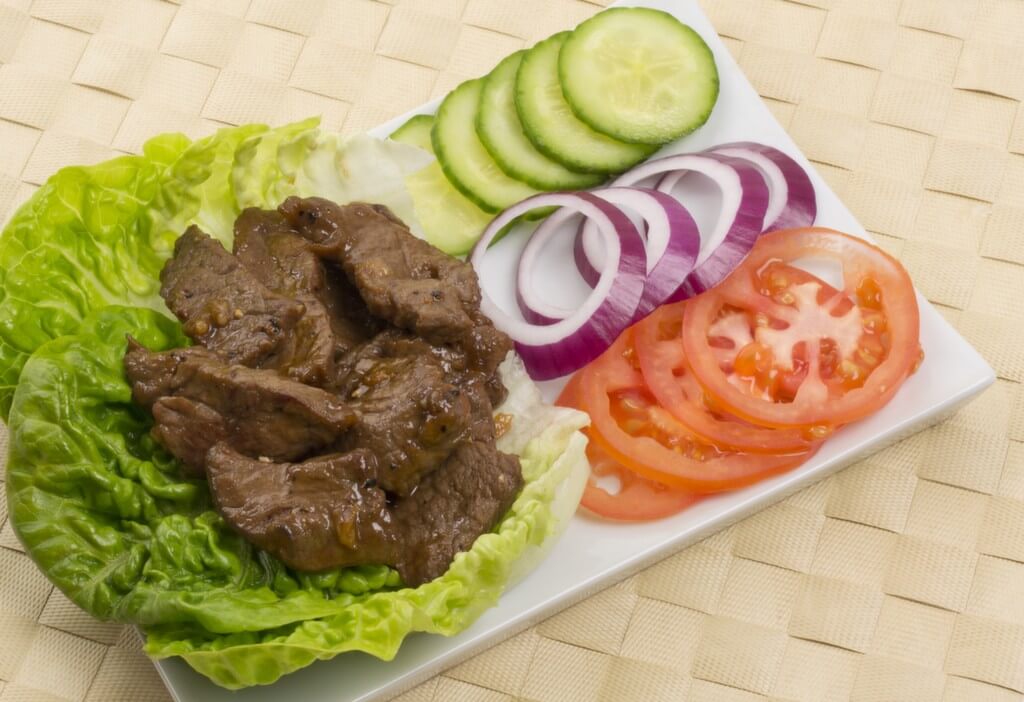
It’s served with rice on the side, like typical Cambodian dishes.
Amok Trey: Coconut milk is utilized more frequently in Cambodian cuisine than you may assume. This is one of them because the fish is fried in coconut milk. After that, the fish is wrapped in banana leaves and cooked. This meal is occasionally served in a coconut shell.
Solar Kari (red chicken curry) is another name for this dish. Coconut milk, chicken, beans, eggplant, sweet potatoes, and red curry paste are all included in the recipe.
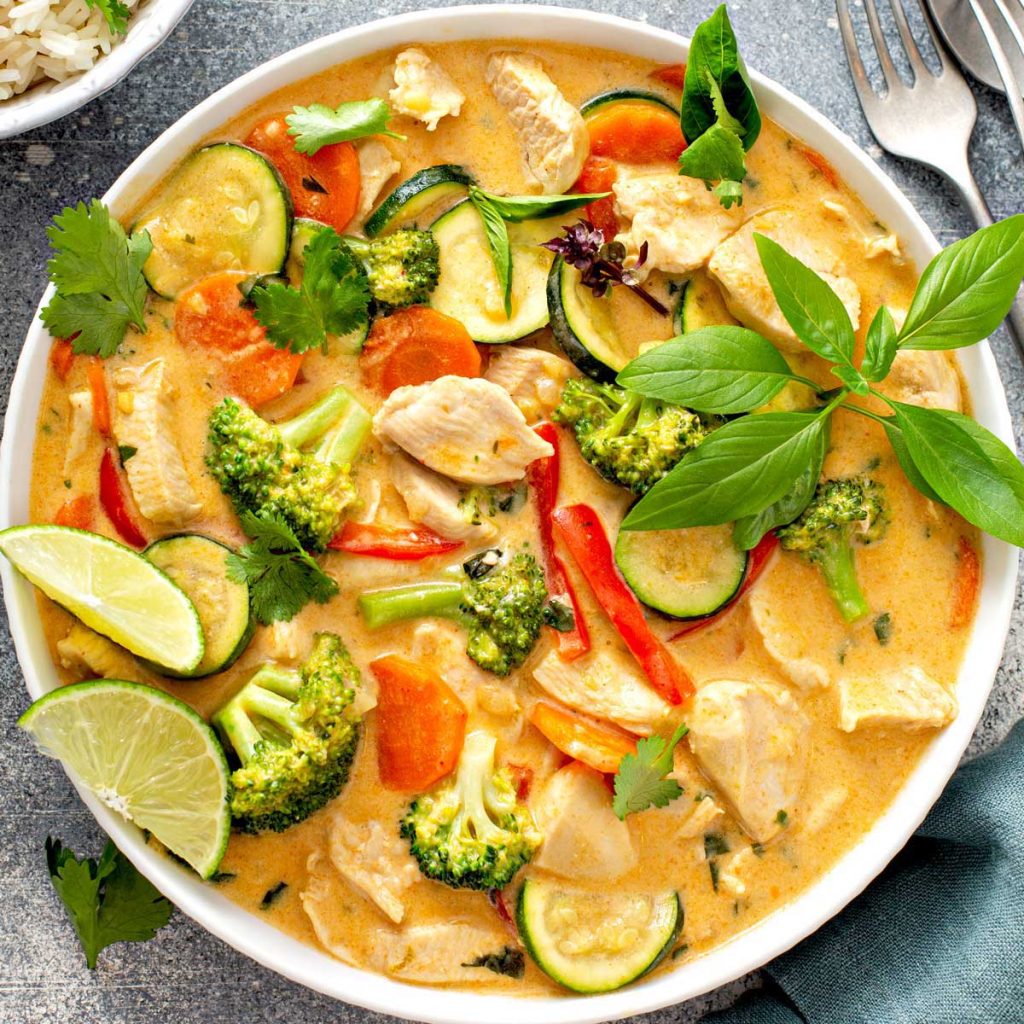
Samlor Machu is a sour soup cooked with pork or fish and vegetables. Lemongrass, kaffir lime leaves, water spinach, shallots, and other ingredients are commonly included in this meal.
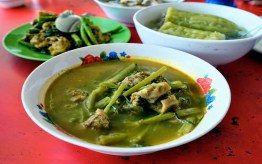
Prahok: This paste is often formed from fermented, salted mudfish that has been mashed into a paste. This paste is commonly used in soups and sauces, but it may also be eaten on its own.
As you can see, none of these include peanuts. However, you should watch for sauces and soups, as some may contain peanuts.
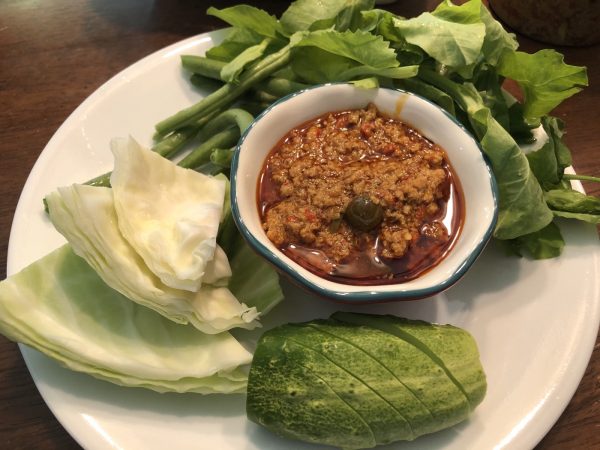
Peanuts may be found in a variety of Cambodian recipes.
Peanuts are most commonly found in Mee Kola, Nom Banh Chok, and Kari Saruman, and spicy roasted peanuts are occasionally served as a snack in Cambodian cuisine.
As I already stated, there aren’t many Khmer meals that include peanuts.
Peanuts are commonly seen in dipping sauces or salads, with broken nuts visible in sure salads. Let’s be a little more precise with them.
Mee Kola is a rice stick noodle boiled with soy sauce. This meal includes vegetables, bean sprouts, papaya cucumber pickles, herbs, and crushed peanuts. It’s even got cooked eggs in it. Consider a ramen bowl with less broth and a topping of peanuts.
Nom Banh Chok: This meal may be cooked with or without peanuts; therefore, if you can locate a restaurant that does not use peanuts, this is the dish to order. Rice noodles with fish sauce and raw vegetables are frequently served as a morning meal. Cucumbers, water lily stems, basil, banana blossoms, and mint are some of the veggies commonly added to this.
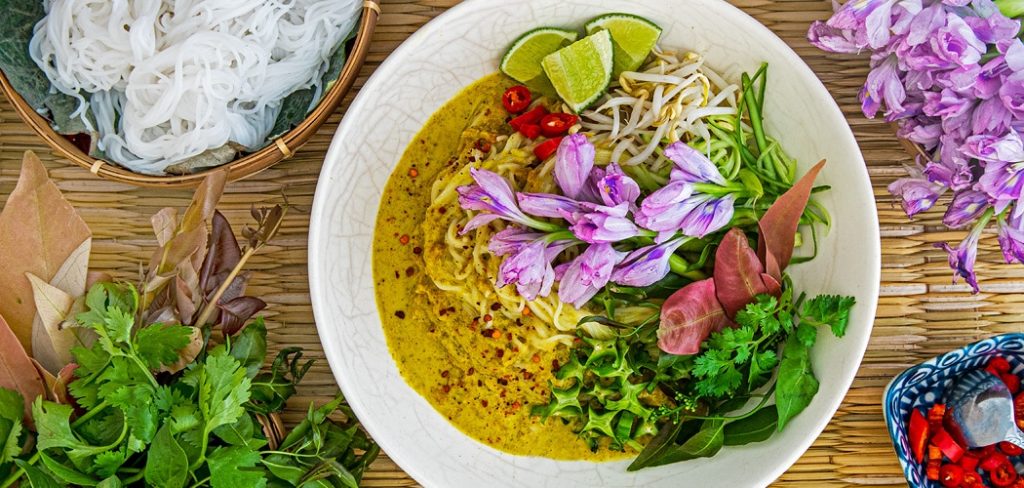
Kari Saruman: Essentially, this is beef tamarind and roasted peanut curry. It’s impossible to avoid peanuts in this one.
Spicy Roasted Peanuts: They are roasted peanuts with chiles as the name suggests.
If you have a food allergy, you should always avoid or be very cautious of the following names. Also, have medical supplies on you at all times, but don’t allow your allergy to prevent you from traveling.
It’s a beautiful part of life to travel the world and try new things. You don’t have to stop living your life because you have an allergy.
Although like other Asian nations, Japan does not utilize a lot of peanuts, there is one dish that we’ve all tried. I was astonished to learn that peanuts are frequently used.
What is Kreung, and does it contain peanuts in Cambodian cuisine?
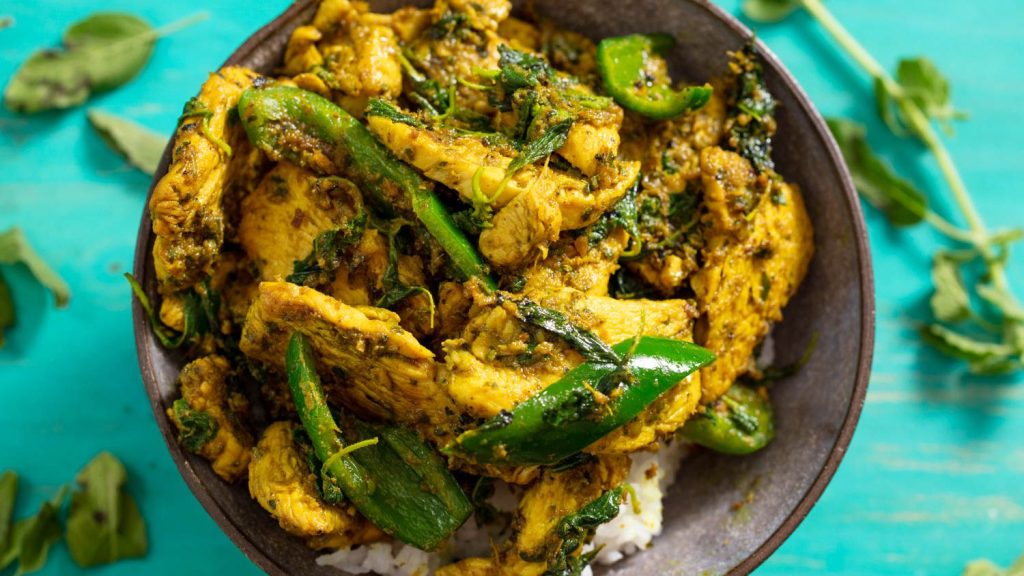
Kreung, often known as lemongrass paste, is a Cambodian spice paste. Peanuts may be present, but they are not always there.
Cambodians, as previously said, prefer to consume fish paste with rice. Almost all of their recipes include some sort of paste or sauce.
Let’s look at how to produce one that’s utterly devoid of peanuts:
You’ll need the following items:
- Turmeric
- Serrano, jalapeno, or any other type of fresh chili pepper
- Garlic cloves (fresh)
- Freshly cut lemongrass
- galanga (fresh galanga) (ginger works as a substitute)
- Leaves of kaffir lime
- a drop of water
- You’ll put all of your ingredients in a blender once you’ve chopped them up into medium-small dice.
Blend everything until it becomes a thick paste. This may be frozen and used later or eaten straight away.
This paste goes well with poultry, soups, and various other foods. In Southeast Asia, spices and herbs are more widely employed.
Cambodian cuisine is bland and easily spiced up using pastes, herbs, and spices.
But do they use any peanut oil?
Is peanut oil used in Cambodian cuisine?
Due to the expensive cost of peanut oil, Cambodian eateries seldom utilize it. However, peanut oil is more commonly used in Cambodian restaurants worldwide.
So, in the end, it’s a matter of where you live.
Even in Cambodia, this is true. This is because of Thai cuisine. You’ll discover more recipes containing peanut oil and peanuts as you get closer to the border.
While Cambodian cuisine resembles Thai and Vietnamese cuisine, it has less chile and sweetness. Their resemblance is due to how much rice they all consume. However, as I previously stated, most of these establishments would not utilize peanut oil due to its high cost.
Because most Cambodians consume fish paste with rice, peanut oil may not be the first item that comes to mind when planning dinner. If you eat at a high-end restaurant, you’ll notice that there’s a lot more peanut oil on the menu.
As previously stated, peanuts are not widely consumed in Asia. However, one country utilizes more peanuts in its diet than all the other Asian countries combined!
Have I answered all of your questions regarding peanuts in Cambodian cuisine?
We discussed the meals to avoid when in Cambodia in this article. We discovered that there aren’t many meals that contain peanuts.
Fish, rice, and noodles are the staples of their diet, with the occasional peanut thrown in for good measure.
Unless you’re near the border, you won’t find peanut oil or peanuts in most meals. This is due to the blending of dietary cultures. Make sure you don’t put your safety in the hands of strangers in general.
Your allergy cards are helpful, but they aren’t always understood. Always carry an EpiPen and travel with someone you can trust. While not everyone can travel with another person, it is still a good idea if you can.
It’s essential to have a person you can trust to apply the EpiPen correctly and understand your responses.











